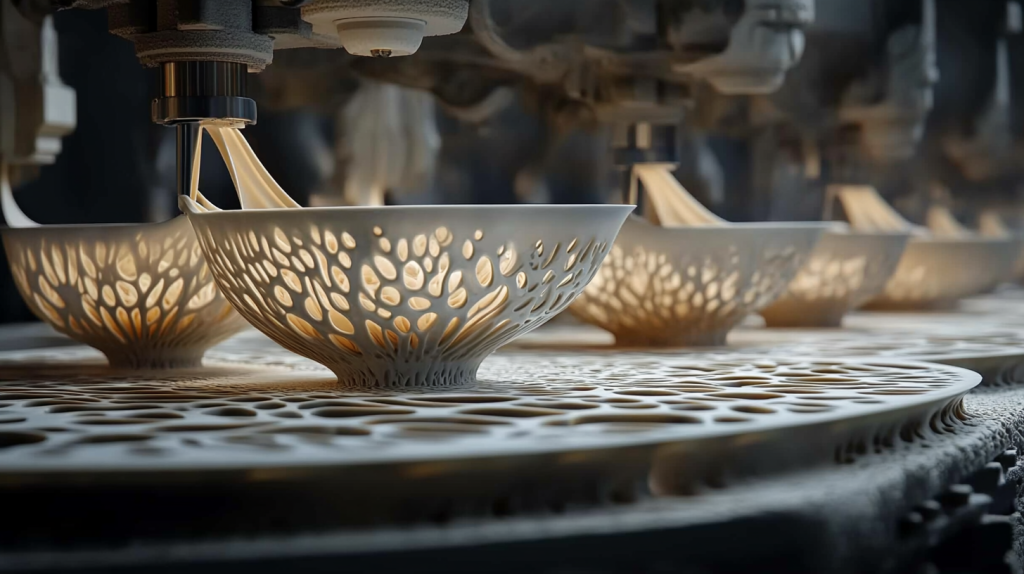In the world of engineering, metalworking plays a pivotal role in various industries, from automotive to aerospace and beyond. Innovations in metal engineering are transforming traditional methods, enhancing efficiency, and promoting sustainability. As technology advances, new materials and techniques emerge, allowing engineers to create stronger, lighter, and more adaptable products. These breakthroughs not only optimize performance but also reduce environmental impact by minimizing waste and energy consumption. Understanding these innovations is essential for professionals in the field, as they enable the development of cutting-edge solutions to meet the growing demands of modern industries.

Additive Manufacturing
Additive manufacturing, commonly known as 3D printing, has revolutionized metal engineering by enabling the creation of complex geometries that were previously impossible to produce. This technology builds metal structures layer by layer, significantly reducing material waste and allowing for custom designs tailored to specific needs. The flexibility of 3D printing means that engineers can iterate designs quickly, providing a faster prototyping phase compared to traditional subtractive manufacturing methods. Moreover, advancements in metal powders and printing techniques have improved the mechanical properties of printed parts, making them suitable for high-performance applications. Industries, including aerospace and automotive, are leveraging this technology to create lightweight components without compromising strength. In Australia, innovative projects driven by engineers in Mackay showcase how additive manufacturing can lead to enhanced designs and reduced time-to-market. Additive manufacturing continues to shape the future of metal engineering, offering sustainable and efficient solutions for various industries.
Advanced Alloys
The development of advanced alloys has transformed the landscape of metal engineering. Traditional materials are being enhanced with modern additives to improve properties such as strength, corrosion resistance, and lightweight characteristics. For instance, titanium alloys are widely used in aerospace due to their excellent strength-to-weight ratio, while nickel-based superalloys are critical in high-temperature applications, like gas turbines. Engineers are continuously experimenting with alloy compositions to achieve specific performance metrics that meet the demands of various industries. As the industry moves toward more sustainable practices, researchers are also developing greener alloys that can reduce the environmental impact during production and disposal. With these innovative materials, the possibilities for design and application in metal engineering are virtually limitless.
Surface Engineering
Surface engineering encompasses various techniques aimed at enhancing the surface properties of metal components. Techniques such as laser cladding, shot peening, and anodizing improve wear resistance, corrosion resistance, and fatigue life. These processes can extend the lifespan of components significantly, reducing maintenance costs and downtime for industrial operations. Laser cladding, for example, can apply a layer of material to a substrate, providing superior wear resistance and increasing the durability of parts exposed to harsh environments. For industries that rely on precision and reliability, surface engineering plays a critical role in ensuring optimal performance. As technology continues to improve, the methods and materials used in surface engineering are evolving, leading to more efficient and effective solutions for manufacturers.
Smart Materials
Smart materials are a fascinating advancement in the field of metal engineering. These materials can respond to environmental changes and external stimuli, such as temperature or pressure, making them highly functional in various applications. Shape memory alloys (SMAs) exemplify this innovation; they can return to a predetermined shape upon heating. This characteristic makes SMAs highly valuable in medical devices, automotive systems, and robotics. Furthermore, researchers are working on integrating sensors and electronics with smart materials to create intelligent components that can monitor their own condition. The future of smart materials holds significant potential for performance enhancement in numerous fields, enabling engineers to develop systems that adapt on the fly.
Lightweight Structural Designs
The push for lightweight designs in metal engineering is mainly driven by the need for efficiency and performance in transportation and structural applications. Advanced computational modeling and simulation techniques allow engineers to analyze stress distribution and identify optimization opportunities in designs. For example, using finite element analysis (FEA), engineers can create lattice structures that maintain strength while significantly reducing weight. Such designs yield benefits in fuel efficiency for vehicles and aircraft, translating to lower operational costs and reduced environmental impact. Combining lightweight structures with advanced materials opens new avenues for innovations in design philosophy and application. This trend is essential for industries aiming to enhance performance while meeting stringent environmental regulations.
Heat Treatment Techniques
Heat treatment plays a pivotal role in enhancing the mechanical properties of metals, making it one of the core innovations in metal engineering. Techniques such as quenching, tempering, and annealing alter the microstructure of metals, leading to improved hardness, ductility, and tensile strength. These treatments allow engineers to achieve specific material characteristics that can be tailored to fit individual application requirements. As industries demand higher performance from materials, the importance of precise heat treatment processes cannot be underestimated. Research into novel heat treatment methods continues to advance, exploring ways to enhance energy efficiency and effectiveness in producing desired material properties.
Application of Robotics
The incorporation of robotics in metal engineering has streamlined operations, ensuring efficiency and precision across manufacturing processes. Automated systems are capable of performing repetitive tasks with high accuracy, reducing production times and minimizing human error. Advanced robotic systems are increasingly being developed to handle complex assembly tasks or intricate welding processes, which can improve overall product quality. Furthermore, with the integration of AI and machine learning, these robots can adapt to variations and optimize production parameters in real time. As the industry continues to embrace automation, the role of robotics in shaping the future of metal engineering expands, fostering innovations that enhance productivity and safety.
Environmental Sustainability
With increasing awareness of environmental issues, sustainability has become a pivotal focus in metal engineering innovations. The industry is shifting towards more eco-friendly practices, from production to recycling. Efforts are underway to minimize waste, reduce energy consumption, and explore sustainable sourcing for raw materials. Techniques such as closed-loop recycling systems are gaining traction, allowing for the recovery and reuse of metals at a significant scale. As regulations tighten and consumer preferences evolve, metal engineering must adapt to embrace sustainable innovation without compromising performance.

The continuous advancements in metal engineering illustrate how the sector is rising to meet modern challenges. By understanding these innovations, professionals, and enthusiasts can better appreciate their significance and impact on the industry.

